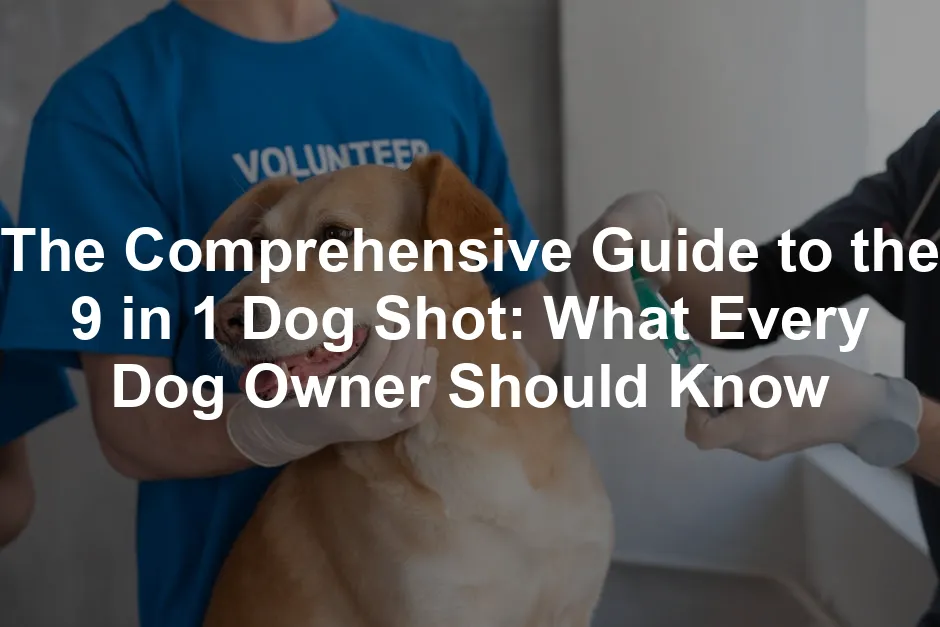Introduction
Vaccinations are vital for your dog’s health. The 9 in 1 dog shot offers robust protection. It guards against several serious diseases, ensuring your furry friend stays healthy. In this article, we’ll discuss why this vaccination is crucial and what it covers. Let’s dive into the details together!
And speaking of health, why not keep your pup prepared for any emergencies with a Dog First Aid Kit? It’s a lifesaver for those unexpected moments when your furry friend gets into a little mischief!
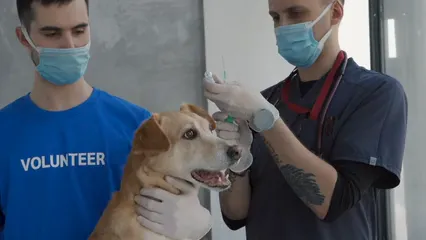
Summary and Overview
The 9 in 1 dog shot is a comprehensive vaccine designed to protect your dog from multiple diseases. It targets serious conditions like canine distemper, parvovirus, and various strains of leptospirosis. This vaccine is typically administered to puppies starting at six weeks of age, with follow-up doses recommended.
Administering the 9 in 1 shot is straightforward, often done through a subcutaneous injection. Keeping your dog’s vaccinations up to date is essential for their overall well-being. Vaccines help prevent outbreaks of contagious diseases, ensuring a healthier life for your pet. Regular vet check-ups will help you stay on track with your dog’s vaccination schedule.
Staying informed about your dog’s vaccination schedule is crucial for their health. Learn more about the vaccination schedule here.
Additionally, maintaining your dog’s overall health is key! Consider adding canine supplements for immune support. They can help strengthen your pup’s natural defenses and keep them thriving!
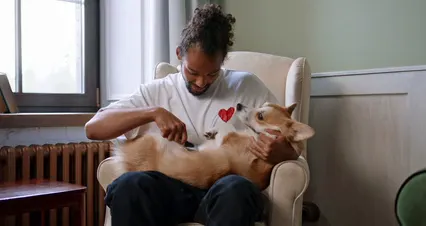
Understanding the 9 in 1 Dog Shot
What is the 9 in 1 Dog Shot?
The 9 in 1 dog shot is a combination vaccine. It protects dogs from multiple diseases with a single injection. This vaccine includes modified-live or killed virus components. It helps your dog build immunity against nine key illnesses. These include canine distemper, parvovirus, and several strains of leptospirosis.
Modified-live vaccines use weakened forms of the virus. They stimulate a strong immune response. Killed vaccines, on the other hand, contain inactivated viruses. They are safer, especially for puppies or immunocompromised dogs. Understanding these options helps you choose the right protection for your pet.
Why is Vaccination Important for Dogs?
Vaccination plays a crucial role in your dog’s health. It helps prevent serious, sometimes fatal, diseases. Conditions like parvovirus can lead to hospitalization or death. Vaccines reduce the spread of infectious diseases in the canine community.
Not vaccinating your dog can have severe consequences. According to the American Veterinary Medical Association, canine parvovirus has a mortality rate of up to 91% in untreated cases. Vaccination rates are essential for herd immunity, protecting even unvaccinated pets. Regular vaccines keep your furry friend safe and healthy, making them a vital part of responsible pet ownership.
And speaking of responsible pet ownership, don’t forget about the importance of having a reliable dog leash with reflective stitching. It ensures safety during those evening walks and helps keep your dog safe from any surprises lurking in the dark!
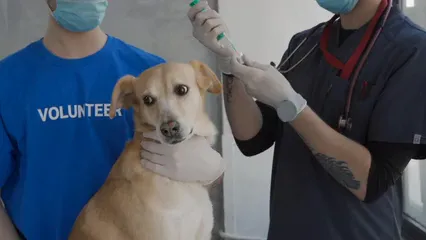
Diseases Covered by the 9 in 1 Dog Shot
Detailed Breakdown of Each Disease
The 9 in 1 dog shot protects against nine serious diseases. Here’s a closer look at each one:
1. Canine Distemper
– Symptoms: Fever, coughing, vomiting, and seizures.
– Transmission: Spread through respiratory secretions.
– Consequences: Often fatal, can cause neurological damage.
2. Infectious Canine Hepatitis
– Symptoms: Fever, abdominal pain, and jaundice.
– Transmission: Contact with contaminated urine, feces, or saliva.
– Consequences: Severe liver damage can occur, leading to death.
3. Canine Adenovirus Type 2 (CAV-2)
– Symptoms: Coughing, fever, and lethargy.
– Transmission: Spread through respiratory secretions.
– Consequences: Can lead to severe respiratory infections.
4. Parainfluenza
– Symptoms: Coughing, nasal discharge, and fever.
– Transmission: Airborne particles and direct contact.
– Consequences: Can lead to more severe respiratory illnesses.
5. Canine Parvovirus
– Symptoms: Severe vomiting, diarrhea, and lethargy.
– Transmission: Spread through feces of infected dogs.
– Consequences: Highly contagious, with a high mortality rate in puppies.
6. Leptospira Canicola
– Symptoms: Fever, vomiting, and kidney failure.
– Transmission: Contact with contaminated water or soil.
– Consequences: Can cause severe kidney and liver damage.
7. Leptospira Grippotyphosa
– Symptoms: Similar to other leptospirosis symptoms.
– Transmission: Spread through contaminated water.
– Consequences: Can result in serious health issues, including organ failure.
8. Leptospira Icterohaemorrhagiae
– Symptoms: Fever, jaundice, and bleeding disorders.
– Transmission: Contact with infected animals or contaminated water.
– Consequences: Can lead to severe liver damage and long-term health issues.
9. Leptospira Pomona
– Symptoms: Fever, abdominal pain, and depression.
– Transmission: Similar to other leptospira strains.
– Consequences: Chronic infection can occur, affecting multiple organs.
Understanding these diseases highlights the importance of vaccination for your dog’s health.

Don’t forget to keep your pup’s playtime fun and engaging with an interactive dog puzzle toy. It keeps their minds sharp and can prevent destructive behavior!
Administration and Dosage
How to Administer the 9 in 1 Dog Shot
Administering the 9 in 1 dog shot is straightforward. Follow these steps for a safe and effective vaccination:
1. Prepare the Vaccine:
– Shake the vaccine well after rehydrating it with sterile diluent.
2. Select the Injection Site:
– Choose a loose area of skin, typically behind the neck or shoulder.
3. Administer the Shot:
– Insert the needle at a 45-degree angle and inject the entire 1 mL dose subcutaneously.
4. Post-Injection Care:
– Monitor your dog for any immediate reactions after vaccination.
Safety Tips:
– Always use sterile equipment.
– Do not vaccinate sick or pregnant dogs.
– Consult your veterinarian for guidance tailored to your dog’s needs.

With proper administration, this vaccine can significantly enhance your dog’s health and longevity.
Vaccination Schedule
Puppies should start receiving the 9 in 1 dog shot at six weeks old. They will need follow-up doses every two to three weeks until they are at least 16 weeks. This schedule helps build strong immunity against serious diseases.
Adult dogs also require vaccinations, especially if they haven’t been vaccinated before. They should receive an initial dose, followed by a booster two to three weeks later. Annual boosters are essential to maintain immunity. Staying on schedule ensures your dog remains protected and healthy.
Who Should Get the 9 in 1 Dog Shot?
The 9 in 1 dog shot is suitable for healthy puppies starting at six weeks of age. It’s crucial for protecting them from various diseases. For pregnant dogs, vaccination is not recommended, as it may pose risks to the mother and puppies.
If your dog has existing health issues, consult your veterinarian. They can help determine the best vaccination plan. Some conditions might require delaying vaccination or choosing alternative options. Always prioritize your dog’s health by seeking professional advice.

Common Myths and Misconceptions
Many myths surround the 9 in 1 dog shot. One common belief is that this vaccine causes more harm than good. In reality, vaccines are thoroughly tested for safety and effectiveness.
Another myth suggests that vaccines are unnecessary for healthy dogs. However, vaccinations prevent serious diseases that can be fatal if left untreated. Understanding these facts can help you make informed decisions. Don’t let misinformation compromise your dog’s health!
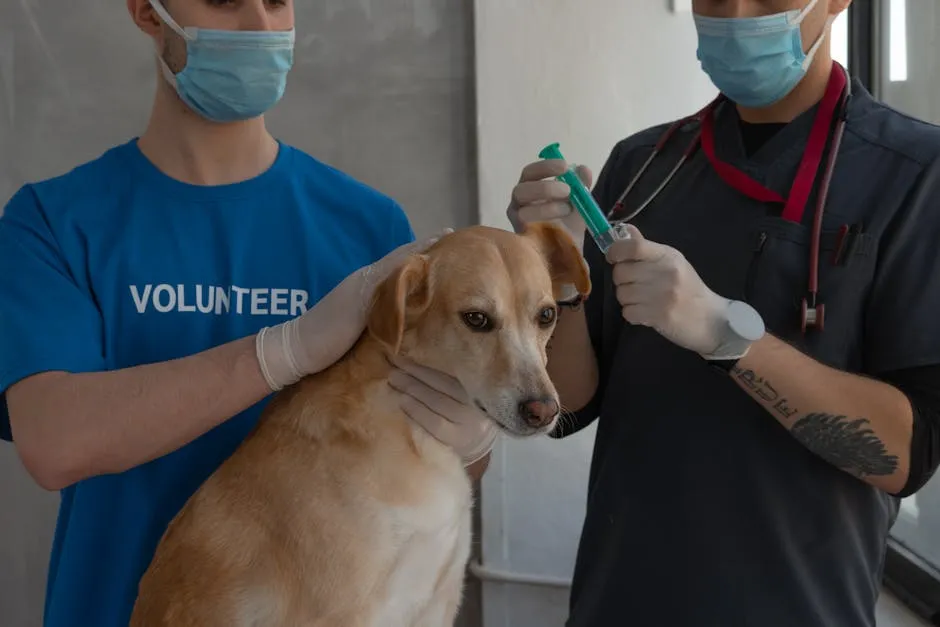
Conclusion
In summary, the 9 in 1 dog shot is essential for your dog’s health. It protects against multiple serious diseases, ensuring your furry friend stays safe and strong. Regular vaccinations help prevent outbreaks and maintain herd immunity. By keeping your dog up to date on their shots, you contribute to a healthier pet and community. Always consult your veterinarian for personalized vaccination advice tailored to your dog’s needs. Together, we can ensure our pets lead long, healthy lives.
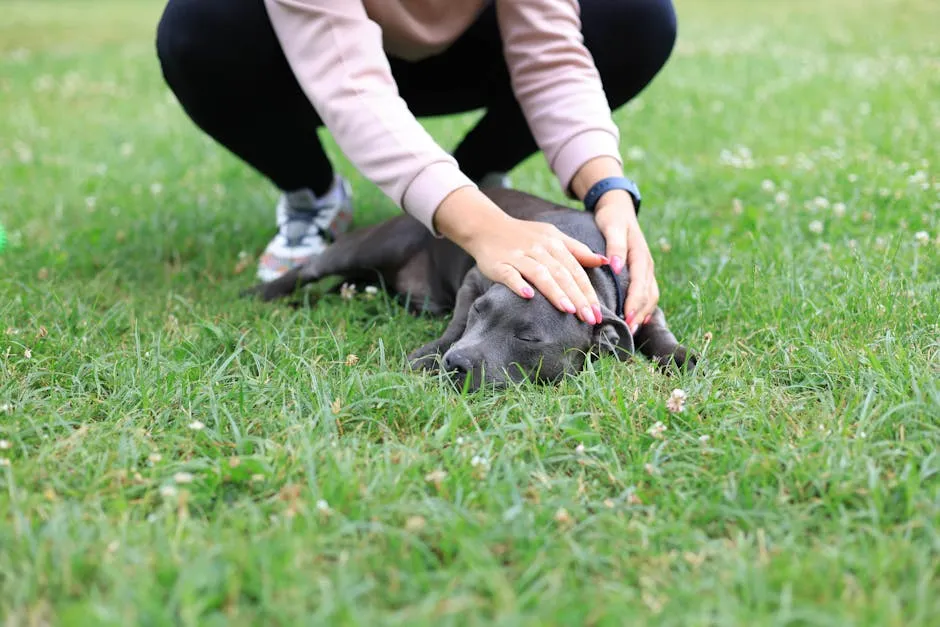
And let’s not forget to pamper our pets! A cozy dog bed with orthopedic support can help ensure they get the restful sleep they deserve after a long day of play!
FAQs
What diseases does the 9 in 1 dog shot protect against?
The 9 in 1 dog shot protects against the following diseases: Canine Distemper, Infectious Canine Hepatitis, Canine Adenovirus Type 2, Parainfluenza, Canine Parvovirus, Leptospira Canicola, Leptospira Grippotyphosa, Leptospira Icterohaemorrhagiae, Leptospira Pomona.
At what age should my puppy receive the 9 in 1 shot?
Puppies should receive the 9 in 1 shot starting at six weeks old. They need follow-up doses every two to three weeks until they are at least 16 weeks old. This schedule builds strong immunity against serious diseases.
Are there any side effects of the 9 in 1 dog shot?
Some dogs may experience mild side effects, such as temporary swelling, soreness, or lethargy. Rarely, severe reactions can occur. If you notice excessive swelling or unusual behavior, contact your veterinarian immediately for guidance.
Can adult dogs receive the 9 in 1 shot?
Yes, adult dogs can receive the 9 in 1 shot. Dogs over 12 weeks old that haven’t been vaccinated should get an initial dose, followed by a booster two to three weeks later. Annual revaccination is also recommended.
How often should dogs be revaccinated?
Dogs should receive annual boosters after their initial vaccinations. Puppies need follow-up doses every two to three weeks until they reach 16 weeks of age. Staying on schedule keeps your dog protected against serious diseases.
To make your dog’s dental care easier, consider a dog toothbrush and toothpaste set. Regular brushing can prevent dental issues and keep their smiles bright!
Please let us know what you think about our content by leaving a comment down below!
Thank you for reading till here 🙂
All images from Pexels

